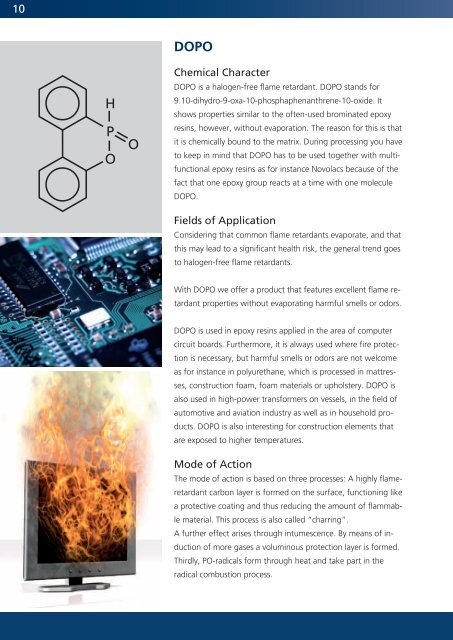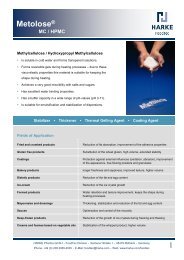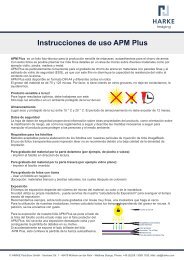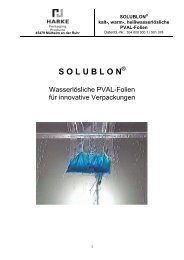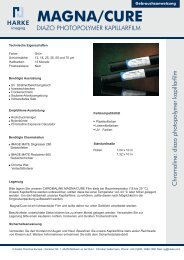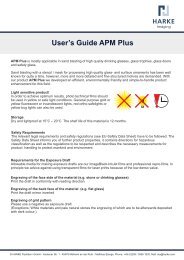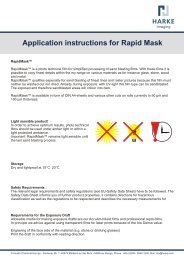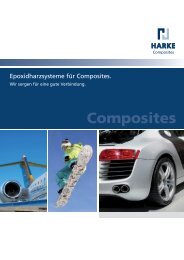Supply Program Flame Retardants - HARKE Group
Supply Program Flame Retardants - HARKE Group
Supply Program Flame Retardants - HARKE Group
Create successful ePaper yourself
Turn your PDF publications into a flip-book with our unique Google optimized e-Paper software.
10<br />
DOPO<br />
Chemical Character<br />
DOPO is a halogen-free flame retardant. DOPO stands for<br />
9.10-dihydro-9-oxa-10-phosphaphenanthrene-10-oxide. It<br />
shows properties similar to the often-used brominated epoxy<br />
resins, however, without evaporation. The reason for this is that<br />
it is chemically bound to the matrix. During processing you have<br />
to keep in mind that DOPO has to be used together with multifunctional<br />
epoxy resins as for instance Novolacs because of the<br />
fact that one epoxy group reacts at a time with one molecule<br />
DOPO.<br />
Fields of Application<br />
Considering that common flame retardants evaporate, and that<br />
this may lead to a significant health risk, the general trend goes<br />
to halogen-free flame retardants.<br />
With DOPO we offer a product that features excellent flame retardant<br />
properties without evaporating harmful smells or odors.<br />
DOPO is used in epoxy resins applied in the area of computer<br />
circuit boards. Furthermore, it is always used where fire protection<br />
is necessary, but harmful smells or odors are not welcome<br />
as for instance in polyurethane, which is processed in mattresses,<br />
construction foam, foam materials or upholstery. DOPO is<br />
also used in high-power transformers on vessels, in the field of<br />
automotive and aviation industry as well as in household products.<br />
DOPO is also interesting for construction elements that<br />
are exposed to higher temperatures.<br />
Mode of Action<br />
The mode of action is based on three processes: A highly flameretardant<br />
carbon layer is formed on the surface, functioning like<br />
a protective coating and thus reducing the amount of flammable<br />
material. This process is also called “charring“.<br />
A further effect arises through intumescence. By means of induction<br />
of more gases a voluminous protection layer is formed.<br />
Thirdly, PO-radicals form through heat and take part in the<br />
radical combustion process.


